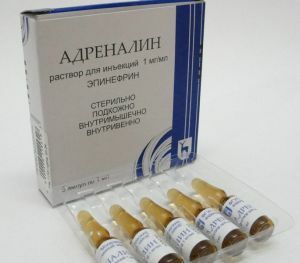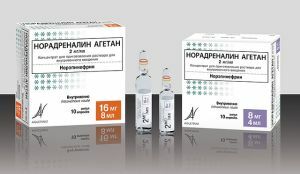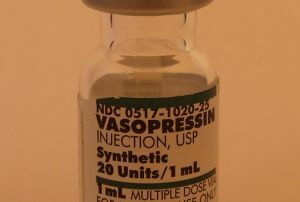 Vasoconstrictor called drugs that cause narrowing of the lumen of blood vessels and a decrease in blood flow in them due to a spastic reaction. Most vasoconstrictors belong to the group of alpha-adrenomimetics.
Vasoconstrictor called drugs that cause narrowing of the lumen of blood vessels and a decrease in blood flow in them due to a spastic reaction. Most vasoconstrictors belong to the group of alpha-adrenomimetics.
In addition to vasoconstrictor, they have a number of other medical effects: increase blood pressure, increase the frequency and strength of the heart, expand the bronchi, increase blood glucose, etc.
The most famous drugs in this group are Adrenaline and Noradrenaline, but there are alsomany others used in various fields of medicine.
Adrenaline has a more pronounced effect on the heart muscle, and norepinephrine - on the peripheral vessels. Most other vasoconstrictors have a pharmacological effect closer to adrenaline.
Contents
- Application in dentistry
- What was the choice of leading dentists?
- Side effects and contraindications to use
- Possible alternatives
Use in dentistry
In dentistry, vasoconstrictors are used in combined solutions with local anesthetics. The reason for this is that local anesthetics themselves( with the exception of Mepivacaine) somewhat dilate the vessels, and this causes a number of undesirable effects:
- vasodilation leads to an increase in the intake of anesthetic in them, as a result of which its concentration at the injection site decreases;
- reduces the effectiveness and time of anesthesia;
- the injection of anesthetic into the vessels and into the total blood flow leads to an increase in adverse reactions;
- marked marked bleeding in the area of injection and subsequent manipulation.
What was the choice of leading dentists?
The main vasoconstrictors used in dentistry are: 
- Adrenaline;
- Norepinephrine;
- Levonodefrin;
- Corbydrine;
- Felipressin;
- Vasopressin.
More detailed about each substance:
- Adrenaline is the most commonly used drug in the dental practice with a vasoconstrictive mechanism of action.
- Norepinephrine is used much less often: due to a strong vasoconstrictor effect, it can cause necrosis - irreversible necrosis of tissues at the injection site.
- Levonordefrin is found in foreign solutions for local anesthesia, the effect is close to adrenaline.
- Corbadrine , in contrast, is part of some domestic solutions: in structure it is closer to Adrenaline, on pharmacological properties - to Noradrenalin.
- As for Vasopressin and Felipressin , they differ from other vasoconstrictors and belong to another pharmacological group. The first is the hormone of the posterior lobe of the pituitary gland, and the second is its synthetic analogue. They do not have side effects, which are characteristic of other means of the group, but are inferior to them in terms of the strength of the action.
Side effects and contraindications to the use of
Adverse effects with the intake of substances of this group can be of two types:
- associated with hypersensitivity to them ( allergic reactions);
- associated with the pharmacological action of ( increased blood pressure, palpitation, arrhythmias, headache, agitation, tremor, etc.).
Strict contraindications to the use of most drugs are:
- severe hypertension or arrhythmia;
- recently suffered strokes and heart attacks;
- severe cardiovascular disease;
- hypersensitivity;
- glaucoma.
 Caution should be observed with epilepsy, moderate hypertension, diabetes, thyrotoxicosis, liver and kidney diseases. Simultaneous use with antidepressants should be avoided.
Caution should be observed with epilepsy, moderate hypertension, diabetes, thyrotoxicosis, liver and kidney diseases. Simultaneous use with antidepressants should be avoided.
Vasopressin and Felipressin are free of these side effects, their main contraindications are hypersensitivity to them( allergies) and pregnancy.
Possible alternatives to
If there are contraindications to vasoconstrictors, local anesthetics may be used without vasoconstrictors in the formulation. Preferred is the anesthetic Mepivacaine, which itself has a vasoconstrictor effect.
It is also possible simultaneous use of drugs that mitigate the side effects of vasoconstrictors( eg, antihypertensive drugs in hypertensive patients, antihistamines in the presence of allergies, etc.).
